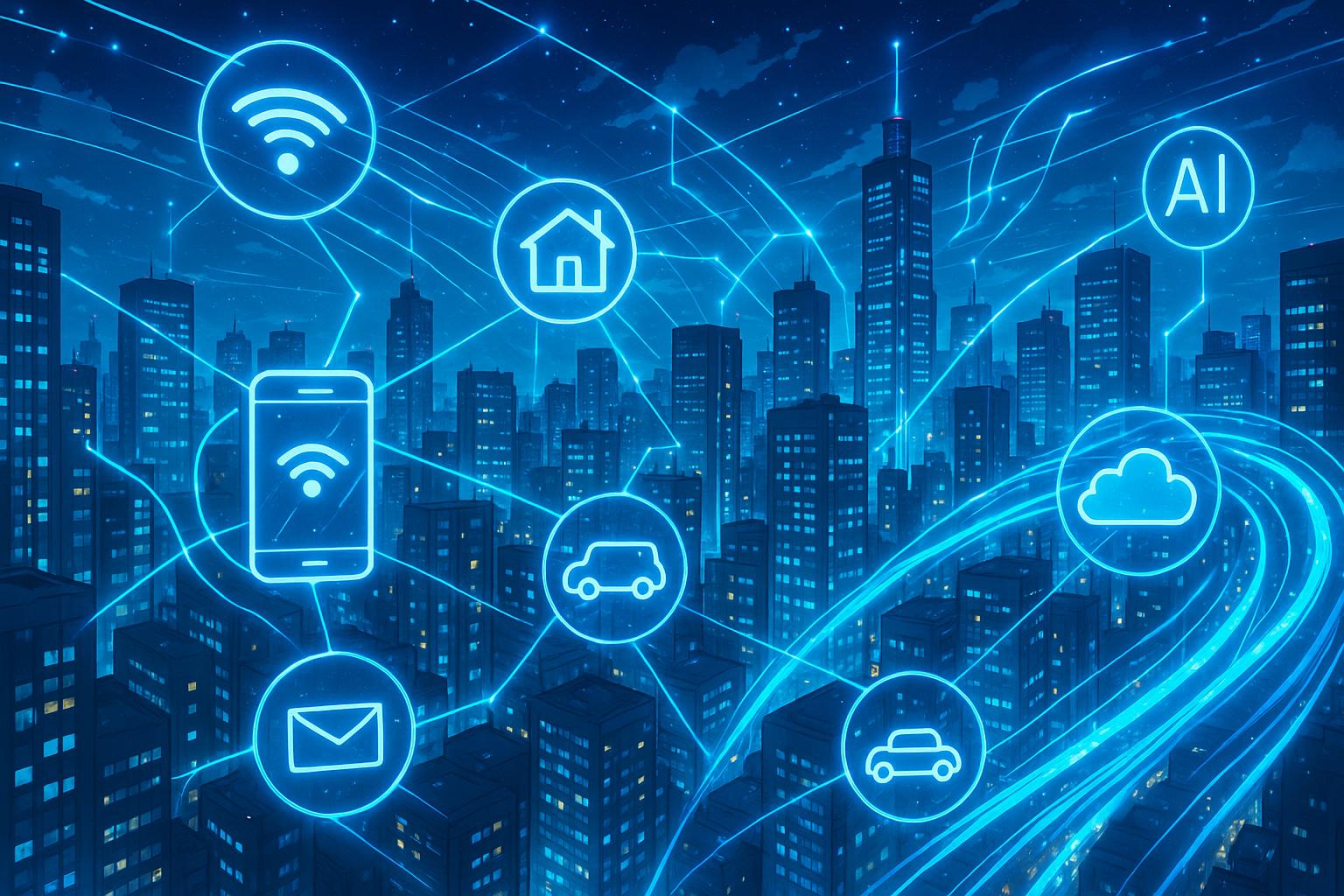Imagine a world where billions of devices—ranging from factory machines and hospital monitors to home appliances and delivery trucks—are interconnected and continuously exchanging data. This vision of the Internet of Things (IoT) is transforming business operations and strategies across sectors. By deploying networks of smart, sensor-equipped machines, organisations are harnessing real-time insights that unlock substantial business value, enabling cost savings and opening new revenue streams.
The growth of IoT is staggering, with an estimated 16.7 billion devices connected globally in 2023, a significant rise from the 12 billion recorded in 2021. Projections suggest that this number could exceed 27 billion by 2025. According to market analysis, the global IoT market is expected to reach approximately $1 trillion by 2024. The increasing deployment of IoT solutions allows businesses to monitor and manage physical operations in innovative ways, yielding “massive new streams of data” that can inform better decision-making. This transformation underscores IoT's emerging role as a cornerstone of digital business strategy, embedding intelligence into everyday processes and thus driving efficiency, innovation, and competitive advantage.
Key trends are reshaping how businesses deploy and benefit from these technologies. For instance, the integration of artificial intelligence (AI) and edge computing is accelerating rapidly. As businesses increasingly leverage AI to analyse IoT data, they enhance their ability to automate responses to that data. In fact, reports indicate that integrating AI within IoT frameworks was among the significant trends in 2024. Edge computing plays a pivotal role in this synergy; by enabling data processing to occur locally on devices rather than relying on cloud solutions, businesses are not only reducing latency but also ensuring faster, time-sensitive insights critical for operational efficiency.
As the presence of IoT devices burgeons, so too does the necessity for robust security measures. A recent analysis revealed an alarming 400% rise in IoT-targeted cyberattacks in 2022, highlighting vulnerabilities that can jeopardise entire networks. In response, regulatory bodies in the UK and other regions are mandating baseline cybersecurity standards for consumer devices. Business leaders now face the urgent challenge of embedding strong security protocols—such as device authentication and data encryption—into their IoT initiatives, assuring customer trust and safeguarding sensitive information.
Sustainability and corporate governance are also significant drivers of IoT adoption. Companies are increasingly deploying connected sensors and smart systems to optimise resource use, supporting environmental and socio-economic governance (ESG) goals. This trend reflects a growing expectation that technology should not only improve operational efficiencies but also contribute positively to environmental outcomes. Many organisations now consider sustainability integral to their IoT projects, aligning technological advancements with their corporate responsibility agendas.
Notably, IoT adoption is shifting from experimental pilot projects to mainstream implementation. A survey indicates that 51% of enterprise IoT adopters plan to increase their budgets for IoT initiatives in 2024, with a notable portion expecting to enhance their spending by over 10%. This rising investment underscores a recognition of IoT's integral role in modern business infrastructure. Factors such as declining costs of sensors and connectivity, coupled with a maturing ecosystem of IoT platforms, facilitate more extensive deployments. As success stories multiply, the urgency for businesses to invest in IoT accelerates, transitioning it from a “nice-to-have” innovation to a fundamental component of contemporary operations.
Looking ahead, the IoT landscape will be profoundly influenced by advances in connectivity, particularly with the roll-out of ubiquitous 5G and the anticipated 6G networks, allowing for high-speed communication between devices. Enhanced AI capabilities will enable machine learning models not only to interpret IoT data but also to run directly on IoT devices. This decentralisation of processing power, along with improved interoperability standards, is set to streamline device integration.
For decision-makers, the imperative is clear: viewing IoT as a strategic asset signifies a long-term investment in their organisations' future. Despite inherent challenges—ranging from security and data governance to change management—the potential returns include operational agility and enhanced intelligence. As IoT ecosystems mature, companies equipped with IoT-derived insights will be able to respond swiftly to market changes, leaving behind the uncertainty that often plagues less informed competitors.
In summary, the Internet of Things marks a profound shift in how businesses utilise technology, moving computing beyond traditional screens and into the very fabric of physical operations. This transition paves the way for digital transformation grounded in tangible, measurable improvements. Companies ready to integrate IoT with clear objectives and appropriate technical support will position themselves as leaders in the years to come. The IoT revolution is not merely a future possibility—it is a present reality, poised continually to reshape industries and redefine competitive advantage. As business leaders contemplate their approach, they should focus not on whether to engage with IoT but rather on how best to leverage it for value creation and alignment with broader innovation strategies. The true winners will be those who master the art of connecting the unconnected, transforming data into actionable intelligence in the process.
Reference Map:
- Paragraph 1 – [1], [2]
- Paragraph 2 – [1], [2]
- Paragraph 3 – [1], [2], [5]
- Paragraph 4 – [1], [3]
- Paragraph 5 – [1], [2], [6]
- Paragraph 6 – [1], [4], [7]
- Paragraph 7 – [1], [5], [6]
- Paragraph 8 – [1], [2], [3]
- Paragraph 9 – [1], [2]
- Paragraph 10 – [1], [7]
Source: Noah Wire Services
